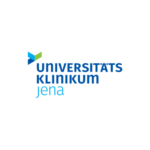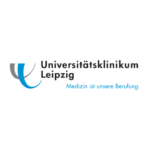
Data Integration Centers
New connections between patient care and biomedical research
A central goal of the German Medical Informatics Initiative (MII) is to make high-quality data from routine care available for research. To this end, Data Integration Centers have been established at the university medical sites of the SMITH Consortium in Aachen, Bonn, Essen, Halle, Hamburg, Jena, and Leipzig. The project partners Düsseldorf University Hospital, University Medical Center Rostock, and Ruhr University Bochum are in the process of establishing their own Data Integration Centers. In the Data Integration Centers, the technical and organizational prerequisites are being created for centralizing medical data and making it available for cross-location research and analysis projects. At the same time, the centers enable research results to be fed back into medical care. Privacy and data security are top priorities.
Functions of the Data Integration Centers
Establishment of IT procedures to process medical data and make it available in a standardized format
Cross-site provision of routine healthcare data
Management of project-related data access and provision options based on patient consent and pseudonymization procedures
Advice on the privacy-compliant use of patient data and handling data use requests
Participation in the design and implementation of research projects with regard to legally, ethically and technically optimized data use
Enabling cross-site use of routine healthcare data
Patient data is often available in very heterogeneous forms across local healthcare systems. To use routine healthcare data for research, researchers have had to extract, merge, and correlate the data themselves for each project. Now, established Data Integration Centers support research by performing these tasks efficiently and with high quality at their sites. In addition, Data Integration Centers provide tools and services to facilitate the long-term use of data for research across sites. Data Integration Centers are generally affiliated with a scientific institute and the respective IT department of the university medical site. The heads of IT departments and chairs of medical informatics, biometrics, and epidemiology may also be supporting institutions.
To date, the Data Integration Centers have mainly been established at university medical sites. With the start of the consolidation and extension phase of the MII in 2023, non-university partners will be increasingly involved in the project. As pioneers, the Digital Hubs, funded by the German Federal Ministry of Research, Technology and Space (BMFTR), have been transferring the technical concept of the MII to regional hospitals and physician networks since 2021. The Digital Hub DISTANCE is based on the IT solutions developed by the SMITH Consortium. The hub performs the same functions as a university Data Integration Center, but is used to exchange data with non-university healthcare facilities. Data that are routinely generated in regional healthcare are centrally collected in the hubs, anonymized, and made available for research. Healthcare providers participating in the project are connected via Hub Connect Boxes, operated locally at regional sites. The PICOS Use Case is used to test the data extraction. To improve research on aftercare following an ICU stay, the PICOS App evaluates data from former intensive care patients.
The Data Integration Center as a Service Facility for Researchers
In addition to standardizing and consolidating healthcare data, the Data Integration Centers offer numerous services for researchers: Among other things, they provide advice on data use in compliance with data protection regulations, on data analysis options, and on quality-assured data management. In addition, the Data Integration Centers provide the organizational framework to make high-quality healthcare data available. They manage broad consent for the use of routine clinical data and are nationally networked to enable multi-site research projects.
If researchers wish to use medical data from the Data Integration Centers, they must describe the planned research topic and the required data and submit a data use request. After a positive vote by the site-specific Data Use and Access Committee, the researchers receive the final data use agreement. Careful handling of the data and feedback on the results are mandatory for researchers.
For multi-site data use projects, the German Portal for Medical Research Data (FDPG) provides centralized access to data and biospecimens from the MII’s Data Integration Centers. Clinical researchers can use this platform, for example, to submit feasibility requests or to request routine clinical data and biospecimens. The FDPG also coordinates the provision of data and contractually secures the use of data.
Secure Technologies for Sensitive Patient Data
Technically, the Data Integration Centers can be mapped using the SMITH reference architecture. This consists of areas for clinical issues (Clinical Domain), research-related issues (Research Domain) and an independently operating Trust Office.
The Trust Office protects the rights of patients and ensures that routine clinical data is used in compliance with data protection regulations. It manages patient consent and pseudonymization of data. Pseudonymization replaces identifying information such as name, date of birth, or address with a combination of characters so that it cannot be directly linked to an individual. Personal data is never released to researchers or third parties, but remains at the university hospital.
Medical data is stored in the Data Integration Centers in an interoperable manner, annotated with metadata and terminology services, and made available for use cases such as GeMTeX and INTERPOLAR. The central data integration platform is the Health Data Storage Clinical. It is connected to patient care data sources such as hospital information systems (HIS), laboratory information systems (LIS) and patient data management systems (PDMS). Direct feedback of research results into clinical routine is possible.
Health Data Storage Research enables both site-specific and cross-site evaluations. The data always remain at the site. Pseudonymized data are provided via the Research Data Portal for Health (FDPG) using Health Data Storage Research. The technical basis for this is the Data Sharing Framework (DSF) used throughout the MII. In some cases, external data for research projects are included and linked to the Data Integration Center data (record linkage).
The Network of University Medicine
The Data Integration Centers established as part of the Medical Informatics Initiative (MII) have been funded by the Network of University Medicine (NUM) since the consolidation and extension phase of the MII from 2023 to 2026. The NUM was established in 2020 as a crisis management measure during the Covid-19 pandemic. The original goal of this network was to bundle and evaluate the research activities, measures and treatment strategies related to Covid-19 at all 36 university hospitals in Germany. The aim was to create structures and processes to ensure the best possible care for Covid-19 patients. The NUM relied on the technical infrastructure of the Data Integration Centers established as part of the Medical Informatics Initiative (MII).
With the end of the pandemic, the NUM is dedicated to bringing together the resources of all university hospitals on issues that go beyond Covid-19. To this end, the Network of University Medicine is working closely with the Medical Informatics Initiative.
The aim of this cooperation between the MII and the NUM is to consolidate the Data Integration Center infrastructure. In the long run, the Data Integration Centers should become an integral part of health research in Germany.








